Airframes
Benevolens Magister
I mentioned to Geo ( Fubar 57 ) in the "Recent Purchases" threads, that I'd try to post some pics of the parts for this kit, when it arrived.
This is not intended as a "proper" kit review, being more an insight as to what is actually in the box, and what can, or can not be done to produce a P-51A and, as provided, the kit parts do not represent a P-51A, and as Glenn pointed out in the "Recent Purchases" response, is more in line with a P-51 or Mustang Mk1/ Mk.1A.
This is partly understandable, as this kit is one of ICM's very early releases, dating from the early 2000's, when they were just starting out, and it is really a mix of generic P-51B/C parts from an earlier release, with new fuselage and separate parts specific to the earlier Allison-engined Mustangs.
Although the original, flimsy, end-opening box has now been replaced by a box top, with a sturdy, "hinged" box inside, the main parts, like all early ICM kits, lack locating pegs and holes, which means more care and attention will be needed to align and fix parts accurately.
However, overall the parts are quite nicely produced, with good, restrained surface detail, although some detail parts may be a little "soft" for the tastes of some modellers, and there is a small amount of flash, here and there, easily removed.
As mentioned, some of the parts, including the wing, are "pure" P-51B/C, and there is even a complete sprue of un-needed parts for the later version, as well as a few individual parts, shown as "not for use" on the fairly basic instruction sheet, including the "Malcolm" hood and an instrument panel. ( ICM have come a long way since this series of kits, with their latest offerings being very high quality, including the instructions and decals, but still at realistic prices. )
The parts specific to the Allison version include the exhausts, the correct radiator intake, the early seat and frame, cockpit floor and cockpit and radio fittings, prop, some other small parts and, of course, the fuselage, which has the main part of the carb intake integral with the cowling, with a separate intake provided. As Glenn pointed out, it is mainly this feature which defines the kit more in line with the Mk1, as it is the narrower intake, and, of course, the style of the radiator intake and scoop.
The wing, although acceptable, will need some slight modification to represent the correct armament, and will also need to have the fairings removed, top and bottom, in front of the ailerons, which only appeared from the P-51B onwards. As far as I know, the gun access hatches are correct (I'd need to check my refs ), but, as with most Mustang kits, some panel lines will need to be filled to represent the smooth laminar flow wing surface, and some rivet detail removed. Separate parts, specific to this type, are included for the undercarriage bays, although the P-51B parts are also in the kit - the instructions need to be checked to ensure the correct parts are used !
The internal detail looks acceptable enough, and includes the curved "floor" which was actually the top of the wing, and it certainly looks different to the P-51B "unused" parts included in the kit.
I'm not sure about the shape of the prop blades, until I check further, but, if needed, the profile can easily be corrected.
I obtained this kit with the intention of building it as a RAF version, and, as far as I can see so far, not much extra work will be needed to produce an acceptable Mustang Mk.1, although I do realise that I will need to alter the wing gun arrangement, and add the nose guns, not an enormous task.
The pics below show a selection of the relevant parts (including that complete sprue of P-51B parts), along with the easily corrected P-51B wing sections, and I hope this brief summary has gone some way to clarify exactly what this kit is like..
EDIT :- I've just done a little more checking, and found that a couple of things mentioned above need clarification.
First, although a Mustang Mk.1 can easily be represented using this kit, after adding the nose guns and the additional gun ports in the wings, replicating a Mustang Mk!a or MkII would need a lot more work, beyond the scope of this post, and it is suggested that if this is required, the individuals concerned undertake further research.
In addition, for a Mk.1, a second landing lamp will need to be made and fitted into the leading edge of the starboard wing. The gun and ammo access hatches, although "passable" are depicted as the two-part gun hatch of the P-51B/C, and should really be altered to the single-piece hatch, a fairly simple task.
The three-blade propeller and spinner are reasonable, but as I suspected, the blade tips are rather too "blunt", and the blades should be re-profiled accordingly, again, a fairly simple job.
Most RAF Mustang Mk.1s were used in the TacR recce role, with a F.24 camera mounted behind the pilot's seat. This was angled with the lens "looking" out of the port side quarter light window, which itself was often, but not always, painted over, but with an open aperture, the shape of which varied. This would mean alterations to the kit parts for the radio "shelf", as well as the addition of a camera, and suitable references should be consulted for a particular subject aircraft.
This is not intended as a "proper" kit review, being more an insight as to what is actually in the box, and what can, or can not be done to produce a P-51A and, as provided, the kit parts do not represent a P-51A, and as Glenn pointed out in the "Recent Purchases" response, is more in line with a P-51 or Mustang Mk1/ Mk.1A.
This is partly understandable, as this kit is one of ICM's very early releases, dating from the early 2000's, when they were just starting out, and it is really a mix of generic P-51B/C parts from an earlier release, with new fuselage and separate parts specific to the earlier Allison-engined Mustangs.
Although the original, flimsy, end-opening box has now been replaced by a box top, with a sturdy, "hinged" box inside, the main parts, like all early ICM kits, lack locating pegs and holes, which means more care and attention will be needed to align and fix parts accurately.
However, overall the parts are quite nicely produced, with good, restrained surface detail, although some detail parts may be a little "soft" for the tastes of some modellers, and there is a small amount of flash, here and there, easily removed.
As mentioned, some of the parts, including the wing, are "pure" P-51B/C, and there is even a complete sprue of un-needed parts for the later version, as well as a few individual parts, shown as "not for use" on the fairly basic instruction sheet, including the "Malcolm" hood and an instrument panel. ( ICM have come a long way since this series of kits, with their latest offerings being very high quality, including the instructions and decals, but still at realistic prices. )
The parts specific to the Allison version include the exhausts, the correct radiator intake, the early seat and frame, cockpit floor and cockpit and radio fittings, prop, some other small parts and, of course, the fuselage, which has the main part of the carb intake integral with the cowling, with a separate intake provided. As Glenn pointed out, it is mainly this feature which defines the kit more in line with the Mk1, as it is the narrower intake, and, of course, the style of the radiator intake and scoop.
The wing, although acceptable, will need some slight modification to represent the correct armament, and will also need to have the fairings removed, top and bottom, in front of the ailerons, which only appeared from the P-51B onwards. As far as I know, the gun access hatches are correct (I'd need to check my refs ), but, as with most Mustang kits, some panel lines will need to be filled to represent the smooth laminar flow wing surface, and some rivet detail removed. Separate parts, specific to this type, are included for the undercarriage bays, although the P-51B parts are also in the kit - the instructions need to be checked to ensure the correct parts are used !
The internal detail looks acceptable enough, and includes the curved "floor" which was actually the top of the wing, and it certainly looks different to the P-51B "unused" parts included in the kit.
I'm not sure about the shape of the prop blades, until I check further, but, if needed, the profile can easily be corrected.
I obtained this kit with the intention of building it as a RAF version, and, as far as I can see so far, not much extra work will be needed to produce an acceptable Mustang Mk.1, although I do realise that I will need to alter the wing gun arrangement, and add the nose guns, not an enormous task.
The pics below show a selection of the relevant parts (including that complete sprue of P-51B parts), along with the easily corrected P-51B wing sections, and I hope this brief summary has gone some way to clarify exactly what this kit is like..
EDIT :- I've just done a little more checking, and found that a couple of things mentioned above need clarification.
First, although a Mustang Mk.1 can easily be represented using this kit, after adding the nose guns and the additional gun ports in the wings, replicating a Mustang Mk!a or MkII would need a lot more work, beyond the scope of this post, and it is suggested that if this is required, the individuals concerned undertake further research.
In addition, for a Mk.1, a second landing lamp will need to be made and fitted into the leading edge of the starboard wing. The gun and ammo access hatches, although "passable" are depicted as the two-part gun hatch of the P-51B/C, and should really be altered to the single-piece hatch, a fairly simple task.
The three-blade propeller and spinner are reasonable, but as I suspected, the blade tips are rather too "blunt", and the blades should be re-profiled accordingly, again, a fairly simple job.
Most RAF Mustang Mk.1s were used in the TacR recce role, with a F.24 camera mounted behind the pilot's seat. This was angled with the lens "looking" out of the port side quarter light window, which itself was often, but not always, painted over, but with an open aperture, the shape of which varied. This would mean alterations to the kit parts for the radio "shelf", as well as the addition of a camera, and suitable references should be consulted for a particular subject aircraft.
Attachments
-
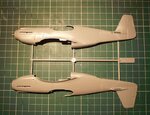 DSCF0786.JPG143 KB · Views: 230
DSCF0786.JPG143 KB · Views: 230 -
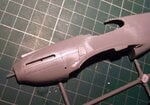 DSCF0787.JPG109.3 KB · Views: 196
DSCF0787.JPG109.3 KB · Views: 196 -
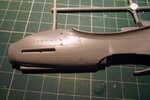 DSCF0788.JPG92.5 KB · Views: 187
DSCF0788.JPG92.5 KB · Views: 187 -
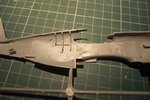 DSCF0789.JPG102.1 KB · Views: 189
DSCF0789.JPG102.1 KB · Views: 189 -
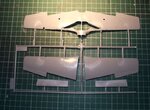 DSCF0791.JPG114.3 KB · Views: 215
DSCF0791.JPG114.3 KB · Views: 215 -
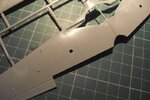 DSCF0792.JPG95.4 KB · Views: 179
DSCF0792.JPG95.4 KB · Views: 179 -
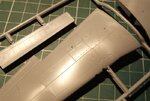 DSCF0793.JPG105.9 KB · Views: 184
DSCF0793.JPG105.9 KB · Views: 184 -
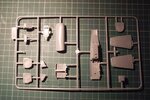 DSCF0794.JPG115.2 KB · Views: 193
DSCF0794.JPG115.2 KB · Views: 193 -
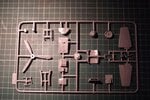 DSCF0796.JPG115.1 KB · Views: 193
DSCF0796.JPG115.1 KB · Views: 193 -
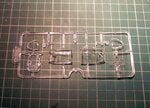 DSCF0785.JPG130.2 KB · Views: 198
DSCF0785.JPG130.2 KB · Views: 198 -
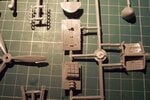 DSCF0797.JPG133.4 KB · Views: 177
DSCF0797.JPG133.4 KB · Views: 177 -
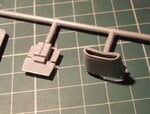 DSCF0798.JPG101.8 KB · Views: 165
DSCF0798.JPG101.8 KB · Views: 165 -
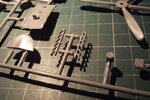 DSCF0799.JPG132 KB · Views: 174
DSCF0799.JPG132 KB · Views: 174 -
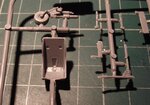 DSCF0800.JPG127.6 KB · Views: 168
DSCF0800.JPG127.6 KB · Views: 168 -
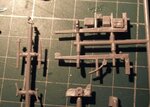 DSCF0801.JPG129.2 KB · Views: 187
DSCF0801.JPG129.2 KB · Views: 187
Last edited:
